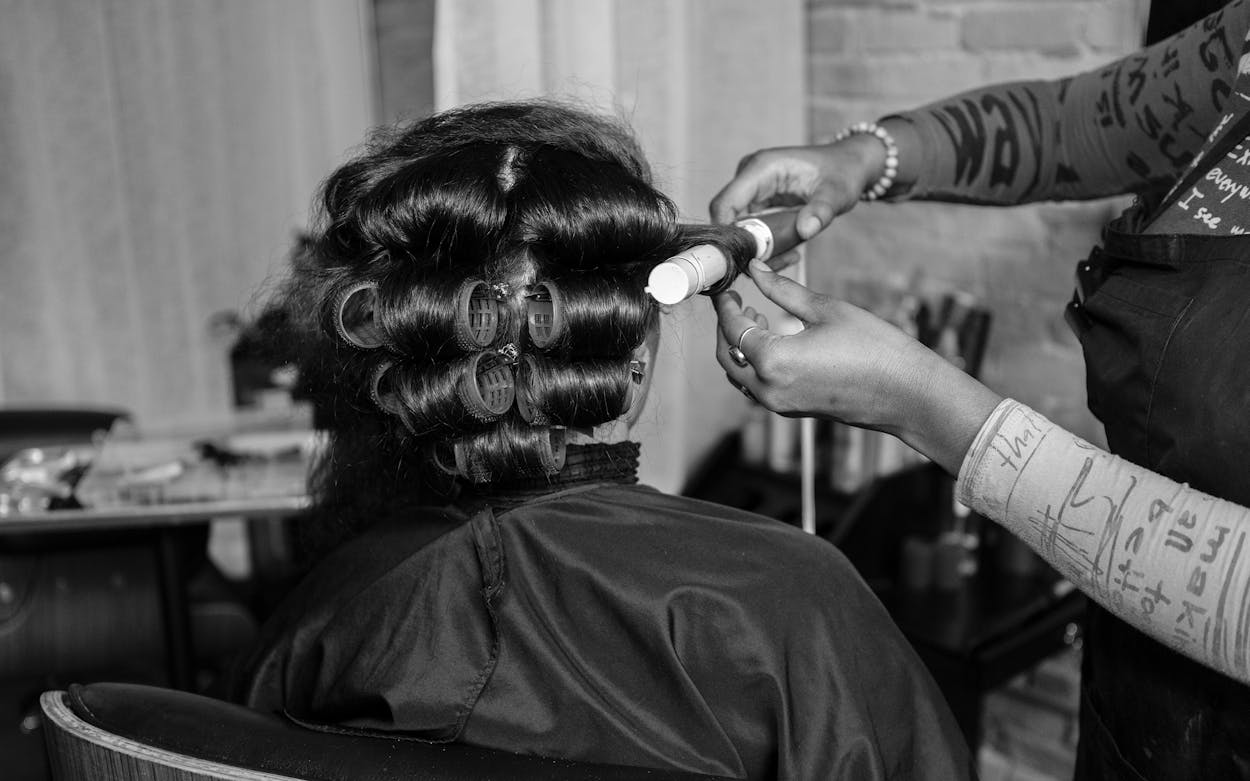Fifty years ago, Big Hair was everywhere in Texas. Small-town waitresses, big-city socialites, church ladies, and (of course) beauty pageant contestants would tease, back-comb, and spray their tresses until it looked as if they had great balls of tumbleweed stuck to their heads.
No one is exactly sure why Texas women had such an affection for Big Hair. There was one theory that traced Big Hair’s roots (sorry) to the era when Texans began buying Cadillacs. “Women started growing their hair out,” one hairdresser told me, “because they had a lot of room they could fill up in the front seat.” Not so, said Gail Huitt, the hairstylist at the time to no less a personage than Governor Ann Richards, who favored old-fashioned bouffants. “A woman learned that when her head was smaller than her butt, she looked deformed, like a marshmallow with an olive on top. Big Hair gives a gal proportion.”
But by 1992, when I wrote a tribute to Texas Big Hair for this magazine, most hairdressers were pushing their clients toward chic, well-manicured looks. Big Hair, I wrote, seemed destined for extinction.
Well, not quite. When I recently checked up on the state of women’s hair in Texas, I called Cerón, a high-society stylist who has salons in Houston’s Memorial and River Oaks neighborhoods and another in Dallas’s Highland Park. “Oh, my dear man,” he exclaimed, “we’re dealing with more hair than ever before!”
“More?” I asked.
“Yes, my friend! It’s not the bouffant that you blow out and then spray for thirty minutes until you can no longer breathe. What we do now is what we like to call mermaid hair. ”
“Mermaid hair?”
“Yes, my friend! Mermaid hair—longer, thicker hair that goes past their waists. It’s what you see on the Kardashian girls and on the women who appear in all those ‘rich housewives’ shows on Bravo. I think eighty percent of my clients want me to give them extensions or some form of a wig to give them that mermaid look. When I do the hair of a young woman for her wedding, she usually asks, ‘Can you bring extra hair, please?’ ”
Mermaid hair, which is distinguished by intense waves, isn’t as vertically daring as the old Big Hair, but its breadth communicates a similarly Texan confidence and brashness. Mermaid hair may not have originated here, but it has made itself at home very quickly.
Ironically, Cerón notes, one group that still loves something akin to the traditional Big Hair—other than the older holdouts you can still find mostly in the state’s rural areas—is young Black women. Many of them choose not to cut their hair or treat it with straighteners. They want natural hair—“hair that goes free,” Cerón says. (Think Erykah Badu or Solange.) “They create these huge Afros that ripple in the wind. The look is so beautiful that it takes your breath away.”
The traditional Big Hair associated with white women may never return to its former prominence, which is just fine with Cerón. He charges clients $2,500 for extensions, and when you add in the color job needed to match them with the natural hair, the cost jumps up to $3,000.
“It’s crazy, completely crazy how expensive it is, but no one complains,” Cerón insists. “The other day, a young woman came to my salon to see about extensions. She was told how much she’d have to pay and she said she couldn’t do it because she needed to make a down payment on a new apartment. She left. Five minutes later, she walked back in and said, ‘F— the apartment. I want the hair.’ ”
This article originally appeared in the February 2023 issue of Texas Monthly with the headline “Big Hair 4 Ever.” Subscribe today.
- More About:
- Style & Design









